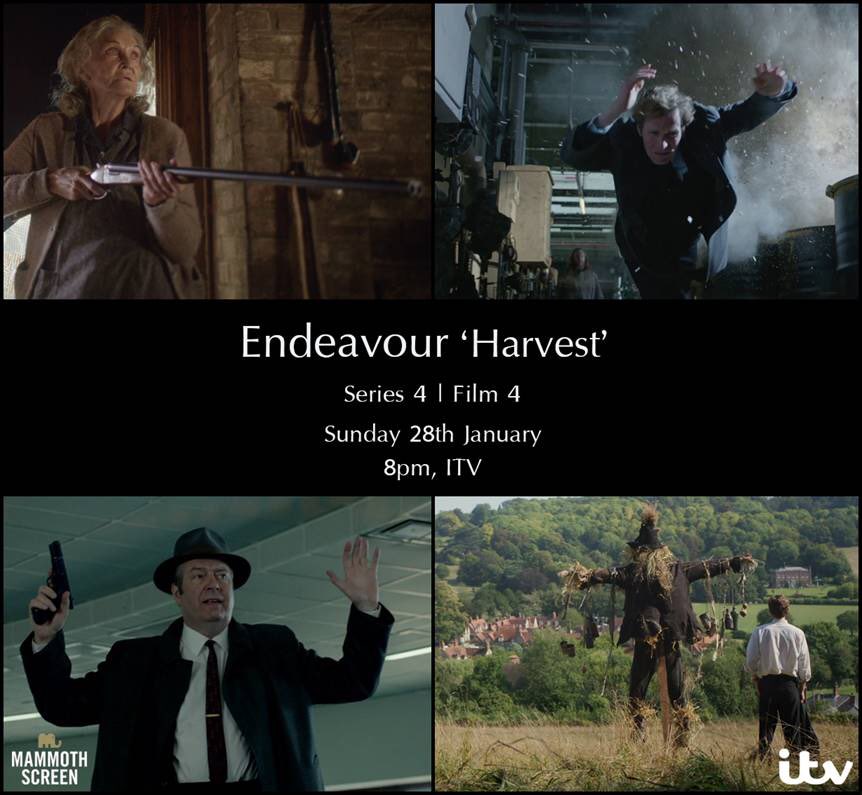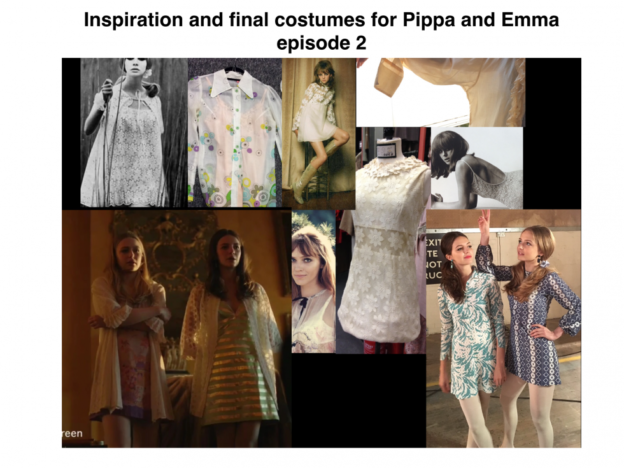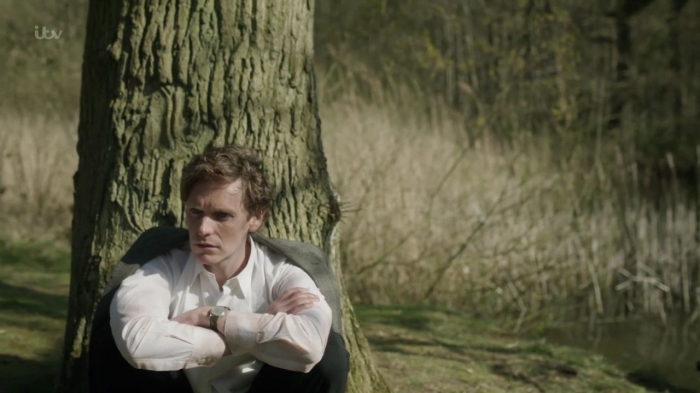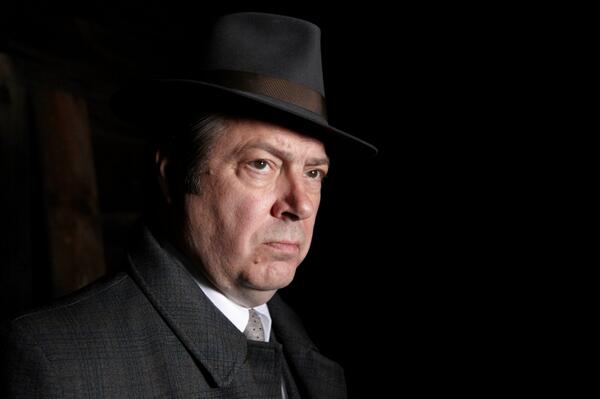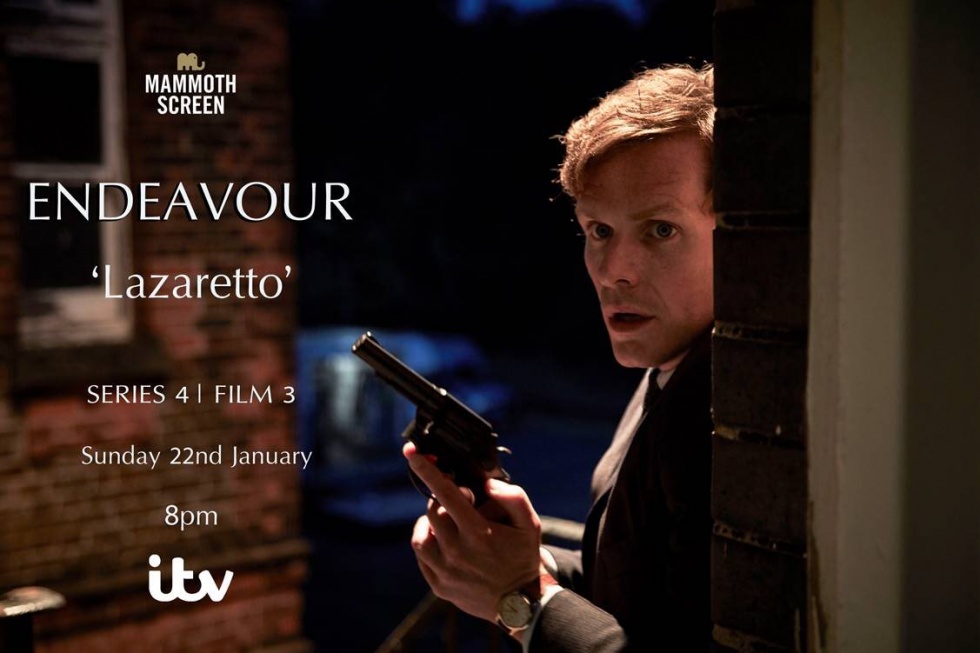THE ENDEAVOUR ARCHIVES: CELEBRATING 30 YEARS OF MORSE ON SCREEN
Interview copyright © Damian Michael Barcroft 2017
Jim Loach – Director
An exclusive ENDEAVOUR interview
by Damian Michael Barcroft
~
DAMIAN: Hello Jim and thanks for this. Quite understandably, and for rather obvious reasons, you never originally intended to become a director. However, would you agree that even very early on in your career, you still clearly felt compelled to tell stories in some form or another?
JIM: I guess. I mean I was always telling stories – most of them quite tall, and they often got me into trouble!
DAMIAN: So, having studied philosophy and worked in news and current affairs, why did you then decide to actually become a director after all, and perhaps even more to the point, although I can appreciate the link between this and your recent projects, why did you leave campaigning journalism to work on soaps such as Coronation Street and Hollyoaks?
JIM: Well my heroes were people like John Pilger and Paul Foot and the great Don McCullin. I wanted to be a heroic journalist, and so documentaries and current affairs was an incredibly exciting place to find myself. Plus I was lucky enough to be making documentaries for World in Action, which was the iconic current affairs show at the time. At Granada television, there was kind of an understanding that you could move from World in Action to Coronation Street – directors like Michael Apted had done it. And by then I’d admitted to myself I wanted to make drama, so they let me have a go on the Street.
DAMIAN: I wonder if forging your own identity as a director was an important issue for you, and if so, were you therefore ever tempted to stay clear of projects that one might, rather simplistically, describe as films with a social conscience?
JIM: I’m still working it out, I think. I mean it’s probably no secret it’s something I’ve struggled with at times, but I kind of don’t think about it too much anymore. You know there’s some things that are easy to pass on because they’re just too close to my Dad, but generally I’ve kind of made my peace with all that. I just follow my gut, and do the things that I’m passionate about. People write what they write, think what they think, it’s not for me to try and control. Mostly it’s OK.
DAMIAN: And given that identity was a central theme in both Oranges and Sunshine (2010) and Life of Crime (2013), do you think this is what attracted you to two these projects?
JIM: Yeah I guess. Plus I liked the characters in both, and I wanted to see them on screen. Identity is always fascinating to me – who we are, what makes us who we are, I think all drama can be reduced to this, in a way, because it’s the essence of the human condition isn’t it ?
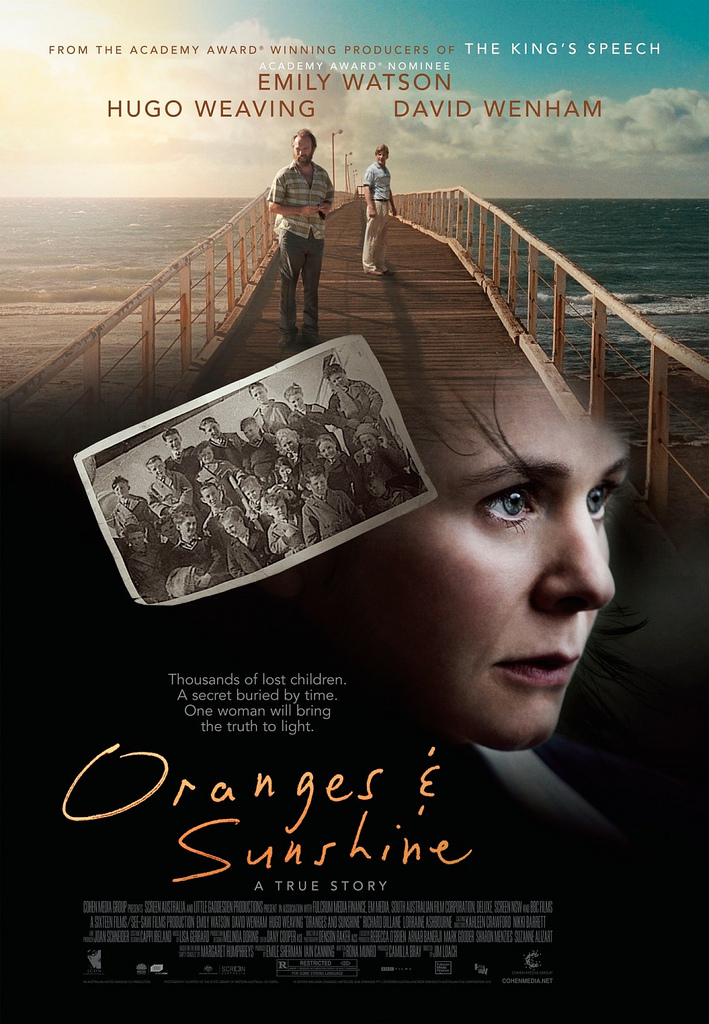 DAMIAN: To deal with Oranges first, was the impetus behind the film to explore the person, Margaret Humphreys, or the issues her work raised?
DAMIAN: To deal with Oranges first, was the impetus behind the film to explore the person, Margaret Humphreys, or the issues her work raised?
JIM: Well I came across the story and I just was amazed and shocked by it, and really wanted to make the film. The fact that an incredible woman was at the centre of the story, with her own dilemmas, just made it stronger to me. So it was both those things really, in tandem. I thought there was something very primal about the idea of children being separated from their parents, and the story had very visual elements – so I knew pretty much straight away I wanted to make the movie.
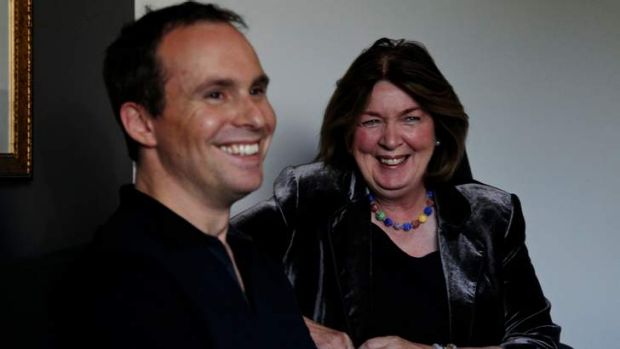 DAMIAN: Who approached Margaret [above] and what was her initial reaction to making a film based on her memoirs?
DAMIAN: Who approached Margaret [above] and what was her initial reaction to making a film based on her memoirs?
JIM: I went to see her, and she was pretty wary. For good reasons, which I fully understood. Maybe I just wore her down, I don’t know! Margaret is a very close friend now, and I’m so fond of her.
DAMIAN: Like someone such as myself asking their subject interview questions such as those found here I suppose, how does a writer or director get to the truth about a real person they are making a film about without becoming manipulative or exploitative?
JIM: I think you just tell the truth, as it seems to you in that moment. Honestly I don’t see it as any more complex than that. When we made Oranges, we didn’t want to be mawkish or sentimental, and of course we felt a huge responsibility to the real people involved, to make sure they would be OK. But at the end of the day we also had a responsibility to make a film that connected with a wide audience.
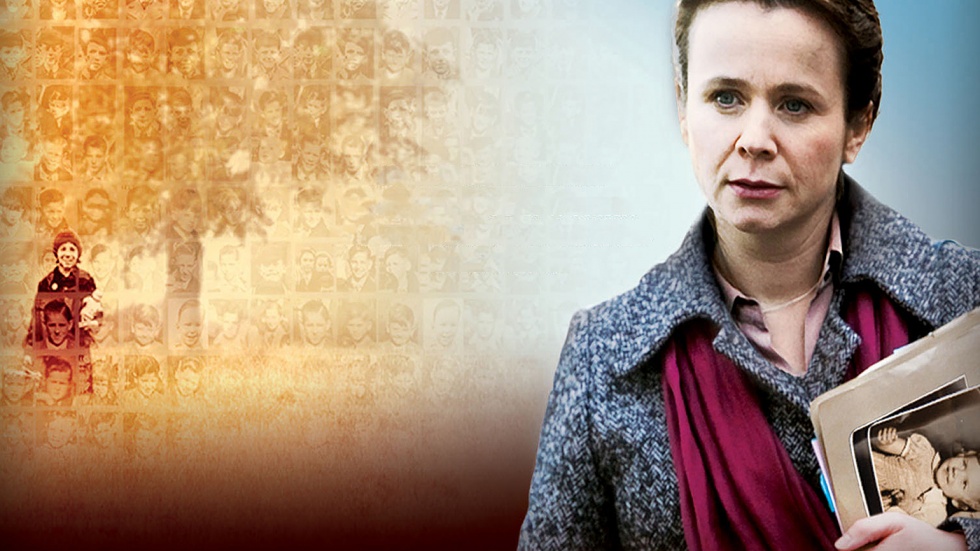 DAMIAN: Emily Watson gives yet another extraordinary performance in this film. Using Emily’s portrayal of Margaret as an example, can you tell us a little bit about your method of working with actors in terms of research, exploring characters, rehearsals and possibly improvisation?
DAMIAN: Emily Watson gives yet another extraordinary performance in this film. Using Emily’s portrayal of Margaret as an example, can you tell us a little bit about your method of working with actors in terms of research, exploring characters, rehearsals and possibly improvisation?
JIM: With that film, Emily spent some time putting in what I call some building blocks for the character…. where she went to school, college, where she’d met her husband, where she worked, that kind of thing. I think working out the stuff that’s before the events in the film is most important, rather than rehearsing scenes from the script. Emily and I worked together very intuitively, I think. Not too much chat, we’d set the scene up as truthfully as possible and then just start shooting – always very long takes, not too much cutting. There was a lot of emotional content to every scene, so we didn’t want to hinder that in any way.
DAMIAN: In many ways, both Margaret Humphreys and Denise Woods, the character in your three-part police drama Life of Crime, share quite a few similarities don’t they?
JIM: Well they’re both very strong women, not to be messed with!
DAMIAN: What do Oranges and Life of Crime say about our society when the relationships between the husbands and the lead female characters in these two stories are severely challenged, or ruined in the latter case, because of their work as crusaders for truth and justice?
JIM: I think the private cost of public duty is a great dramatic dilemma – it’s a circle that can’t ever really be squared, although it doesn’t stop anyone trying.
 DAMIAN: Hayley Atwell who played Denise Woods is probably most famous internationally for her appearances in the Marvel Cinematic Universe such as Captain America and Agent Carter. How did she become involved with Life of Crime?
DAMIAN: Hayley Atwell who played Denise Woods is probably most famous internationally for her appearances in the Marvel Cinematic Universe such as Captain America and Agent Carter. How did she become involved with Life of Crime?
JIM: I love her work and we met up and talked it through. It was a tough shoot, and Hayley turned in a brilliant performance.
DAMIAN: Obviously an actor will audition for a part but how does a director usually get chosen for a film or television project?
JIM: Well there’s a difference between the projects you have developed yourself, and those that are sent to you. I like both, but it’s a different process. If it’s a script you’ve been sent – you have to audition, like everyone else! But I tend to be quite careful, you have a sense of where your zones are, material-wise, if you know what I mean. And my agents tend to only send me stuff they know I’ll respond to.
DAMIAN: And can you describe how and why you think you were approached for ENDEAVOUR?
JIM: I was really keen to get back into British television, as I’d been away for a long time. And I met Helen Ziegler, our supremely talented producer, and we talked it round the houses. For me, it’s always a combination of the material, the writer and the producer that makes me want to get involved.
DAMIAN: So you get the job, you read the script and then, because I’m fascinated by the whole process, I wonder what happens next – can you take us through your approach to directing tonight’s ENDEAVOUR, HARVEST?
JIM: Well we started with a brilliant script of course. Without that you really haven’t got anything. But then I loved the elemental feel of it, and the very pagan, ritualistic story, set against the modernity of nuclear power. So that central conflict seemed very cinematic, and like a representation of Morse’s inner conflict. So together with the brilliant Ed Rutherford, our director of photography, Alison Butler, the designer and Charlotte Mitchell our costume designer, we developed the visual plan for the piece. We wanted to use lots of low, direct light straight into the lens, flares and all that… we wanted a kind of ethereal, ‘other worldly’ feel, where anything is possible.
DAMIAN: In terms of camera angles and setups, do you ever wish you’d have approached certain scenes differently when you see the rushes of during the editing process?
JIM: Shall I lie ? Yeah, course. You’re constantly confronted with your mistakes, but you learn to try to work in a way that enables you to cut them out! It’s when you’re stuck with them you’re in trouble. But then again, you’ve got to take risks I think – playing it safe isn’t really an option. No guts, no glory, I reckon.
DAMIAN: I don’t know if you’re a fan of ENDEAVOUR or INSPECTOR MORSE, but do you think it is a help or a hindrance if directors are “Morse literate”?
JIM: I think you can do it either way. I don’t personally like to get too hung up on what’s already been done, and the references and all that are cool, but I’d personally prefer to leave them for the audience. You kind of have your own thing going on, and you want to develop that.
DAMIAN: There are often many revisions to the script throughout the shooting of ENDEAVOUR, can you describe your collaborative process with the writer Russell Lewis?
JIM: Russ is an exceptionally talented writer and a pleasure. Basically he told me what’s going to happen, and then I got on with it! We had a lot of fun, and he’s a very collaborative writer, full of ideas. When everyone sat and pondered, he’d go out for a crafty smoke – and come back with the solution.
DAMIAN: I know that Shaun Evans has a very particular view and insight into his character, often sharing his own opinions regarding the motivations of Endeavour etc. At what point would you say that most of his queries are resolved, during pre-production or while shooting?
JIM: Well anytime really. Anytime is fine with me, so long as it’s post coffee. We talked all of the time, throughout the whole process. Inevitably a lot of stuff gets worked out as you shoot, because the whole thing has come to life then, and the questions become more urgent and real, in a way. Shaun has a brilliant eye for the detail, which is important because ultimately he’s the guy that’s got to tell us what’s been going on. I loved watching him from the camera.
DAMIAN: And with a cast of such a high calibre as ENDEAVOUR, isn’t it a little daunting to direct actors who know their characters inside out and have been performing them for some years now?
JIM: Not daunting no, because actors are actors, you know? The process is the same. You’re all searching for the the truth of the piece, and looking to stretch yourself creatively.
DAMIAN: As opposed to projects such as ENDEAVOUR, would you say you enjoy more creative freedom when directing your own films which might be described as a little more intimate or personal?
JIM: In a way, yes, I mean on my films you kind of have complete freedom, because you are the originator of the project. But then I have to say the producers gave me a lot of creative freedom with this, which was really brilliant. It’s exactly what you want from producers really – encouraging you to go for it, to have the courage of your convictions. So creatively it was very rewarding, and I’m very proud of the result.
DAMIAN: Each ENDEAVOUR film has had a different director (apart from FIRST BUS TO WOODSTOCK and HOME which were both directed by Colm McCarthy), is there ever a sense that directors are expected to remain consistent to a particular style or are directors free to put their own visual stamp on their episodes?
JIM: The producers told me to put my own stamp on it. There’s no ‘house style’. They want you to do your thing. So that was a big reason to get involved.
DAMIAN: Would you say that you have a particular visual style?
JIM: Oh god, you know it’s not always easy to articulate, because it’s sort of intuitive, it’s a part of you. It’s a reflection of how you see the world, people, relationships, your aesthetic tastes, your hang ups – absolutely everything. I mean, I would say definitely yes – but that’s probably for others to judge…
DAMIAN: Which film or television directors do you admire?
JIM: So many. Cassavetes was my hero, the Dardennes, Winterbottom, Lynne Shelton, David O’Russell. So many. I think I’m probably influenced by everything I see, in some way – I guess we all are.
DAMIAN: What can you tell us about your new film Measure of a Man which I believe is due to be released sometime this year?
JIM: It’s a classic American coming of age film, about an overweight kid, who just wants to fit in. It’s a film I’d wanted to make my whole life really – I think it’s a genre that American independent cinema does so well – and Stand by Me has been a film that I’ve always loved. I wanted to make a movie with more of a smile on its face, just lighter in tone – I thought it was time to have some fun. So there’s a lot of humour, but I think it’s a story that anyone can connect with, because we’ve all felt like an outsider at some point. Judy Greer, Luke Wilson, Donald Sutherland star alongside young Blake Cooper, who is incredible.
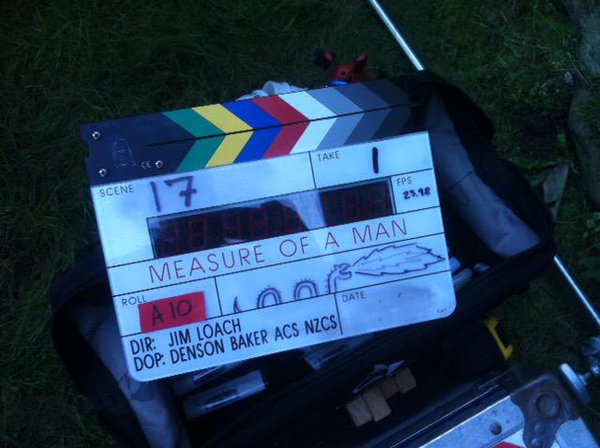 DAMIAN: And what is the legendary Donald Sutherland like to work with?
DAMIAN: And what is the legendary Donald Sutherland like to work with?
JIM: He’s deadly serious about the work of course, and tonnes of fun also, so it’s a good combination. I think he’s the most technically accomplished actor I’ve ever worked with, and he found an extraordinary emotional connection to the character. He’s done something quite special in Measure of a Man, and I can’t wait for people to see it.
DAMIAN: Your next film after that is another collaboration with screenwriter Rona Munro. What is it about her writing that you find so engaging?
JIM: Rona writes dialogue which is so beautiful, and so true, and we adore working together. I think we see the world similarly, which is important, and balance each other quite well, except she’s much cleverer than I am. I hope we can get to make another film soon – we have a script ready. But first I’m going to be making a film called The Panopticon – it’s a fantastic script by Jenni Fagan, adapted from her own novel. It’s set in Edinburgh, and a really special project.
DAMIAN: I notice that many films these days, particularly those with a relatively small budget, have many production companies, distributors and financiers credited in a list almost as long as its cast. How difficult is it to get your feature films made and into cinemas?
JIM: It’s hard, and getting harder, but others are better placed to say why. I just want to be able to raise enough money each time to make the films I want to make.
DAMIAN: What do you think you’d be doing now if you hadn’t decided to become a film and television director?
JIM: Ha, God knows! Centre midfield for arsenal?!
DAMIAN: Well I’m glad you did, particularly when you direct projects with such honesty and integrity. And I must say, I much prefer to see you directing in Oxford as oppose to Weatherfield. You know, I remember seeing Russ as a child and he kept a sick pigeon in a box at the bottom of his bed until it was well again. I wonder if you had any birds as a child – a kestrel perhaps?
JIM: HA! No birds, but we did have a cat called Fanny. Don’t ask why…
DAMIAN: Jim, thank you very much indeed and all the very best with all your future work.
JIM: Thanks!
Interview copyright © Damian Michael Barcroft 2017

